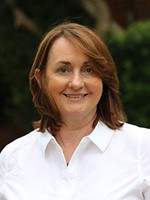









The purpose of this presentation is to provide educators with the understanding, confidence and tools to teach effective Mathematics in the 21st Century classroom. The teaching is evidence-based and focused on Mathematics in context, where educators will explore examples of, and propose solutions to, real-world problems that have explicit Mathematics links (such as the Census, why it is used and how it assists with Town Planning). Mathematics concepts are taught together, rather than individually, to enable deep learning, see the relevance in the subject, and to develop a love of Mathematics as a whole.
Through this presentation, educators will have the understanding of how to integrate Mathematics into an Inquiry-Based Learning program and the knowledge of how to guide students to create innovative, Mathematics driven solutions. For example, analysing the Census, ascertaining what a community needs based on its Census data, 'buying' a property, designing a resource for the community and 3D modelling it. The concept driven learning focuses on a range of skills including length, perimeter, area, scaling, multiplication, division, 2D shapes, 3D shapes, interpreting data and finding the median. ICT is integrated throughout the learning as students research and devise solutions on their devices (TinkerCad and the Adobe Suite).
The technology platforms are the Adobe Suite (Fresco/Illustrator), Google Docs/Slides and TinkerCad. This presentation will be student lead with support from teachers.
This unit was successfully implemented this year with an Extension Year 6 Mathematics class where the class was broken into 6 small groups. Many students noted that this unit was their favourite of the year and it was apparent that they enjoyed it as they carefully navigated their way through the Census and proposed creative solutions to make their chosen community more inclusive. The students proposals included community resources such as language schools, retirement centres, mental-health facilities, additional hospital wings and childcare centres - all justified by the Census data. As the task was open-ended, the students had the opportunity to extend themselves whilst gaining a deeper understanding of Maths in context.
The session will begin with an introduction of the learning that will occur. That being, how to create inquiry-based Mathematics learning with a focus on innovative solutions. The audience will be introduced to the idea of concept-driven learning and an overview of the concepts that will be covered will be announced. A YouTube clip of the use of the Census will be played. (https://www.youtube.com/watch?v=GShvK5jj7Os&t=25s) Approximate time - 20 minutes.
Subsequent to this, the audience will be an active participant throughout the session. The presentation is student-lead, with the assistance of teachers, and aided by a Slide presentation. The audience will independently or in a pair/group delve into the Census and be guided through the learning through questioning and peer-to-peer assistance where needed. The focus within the Census is on on particular data sets (such as demographics, health, wage and languages spoken) and record information on Google Docs or Slides (audience choice). Approximate time - 20 minutes.
Next, the audience will collaboratively brainstorm a range of resources that a community may need on a shared whiteboard/piece of paper (eg: hospital, language school, community centre, park, mental-health facility, etc). The audience (independently/in their groups) will ascertain what their suburb needs based on their Census data. If required, peer-to-peer interaction will be employed. Approximate time - 10 minutes.
The audience will design a floor plan of their resource on Adobe Fresco/Illustrator (or a similar illustration app) with the use of a scale. A checklist will be provided to the audience to ensure they include the perimeter and area measurements, and a scale in their 'blue-print' design. Students will sit one-on-one with the audience to guide them on their path to success. Once complete, the resources will be 3D modelled on TinkerCad. Again, students will sit one-on-one with the audience. Approximate time - 30 minutes.
The session will finish with the audience sharing their designs and asking further questions. Approximate time - 10 minutes.
https://fuse.education.vic.gov.au/Resource/LandingPage?ObjectId=2d7fed4c-e0c8-4f01-99b6-f0fc140a129e
Katie Makar, & Jill Fielding-Wells. (2018). Shifting more than the goal posts : developing classroom norms of inquiry-based learning in mathematics. Mathematics Education Research Journal, 30(1), 53–63. https://doi.org/10.1007/s13394-017-0215-5